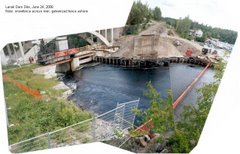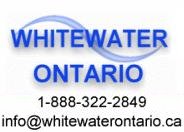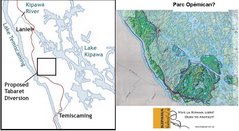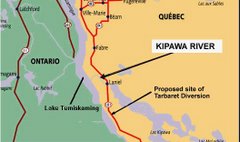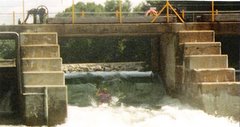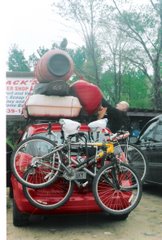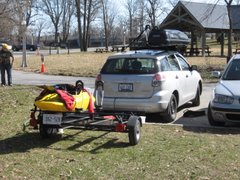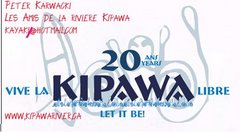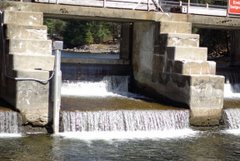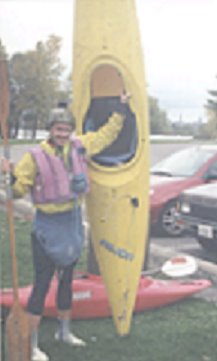All from From Jamie Keen: at Mining Watch - except pictures from CTV.CA
http://www.ipolitics.ca/2012/10/26/harper-government-changed-course-on-navigable-waters-act-four-months-ago/ Harper government changed course on navigable waters act four months ago By James Munson | Oct 26, 2012 5:00 am On February 27 2004, Transport Canada decided the construction of a shellfish farm in Blind Bay, British Columbia needed an environmental assessment because of requirements in the Navigable Waters Protection Act. Five years later, the facility — which required floats, weights and anchors to be placed in BC’s Georgia Strait — was approved after the outfit in charge of performing the assessment, the Canadian Environmental Assessment Agency, concluded the project wouldn’t harm the environment. That seems like a pretty straightforward link between the Navigable Waters Protection Act (NWPA) and environmental policy, and for the better part of two decades examples like these were normal, even if the NWPA itself never mentions the environment. Just check any easily-available regulatory filings. In April of this year, Cenovus Energy was advised by Alberta’s environment department to go and see if the NWPA would trigger an assessment for a thermal project it was working on. Another random example from the government’s own mouth – Transport Canada explained to the town of Markham in a March 2008 letter that some approvals under the NWPA would mean an assessment. And it wasn’t only in the hidden corners of the public service that this relationship was well known. The Senate, in a 2009 report on previous changes to the NWPA, stated unequivocally that the act is linked to environmental policy. “The NWPA plays a wider role beyond that of protecting public navigational rights because the navigational approval process under the NWPA can trigger environmental assessments though the Canadian Environmental Assessment Act,” says the Standing Senate Committee on Energy, the Environment and Natural Resources’ report from June 2009. So when government ministers, in response to more changes to the NWPA being made in the most recent omnibus budget bill, began speaking as if the link never existed this week, the opposition New Democrats were understandably confused. Environment Minister Peter Kent reiterated the government’s position Thursday after he spoke at a luncheon in an Ottawa hotel. “The Navigable Waters Act provided for navigation,” said Kent. “The changes that were made to that act are under the Transport Ministry – they involved transport infrastructure.” Later, outside the House of Commons, the NDP’s environment critic Megan Leslie pointed out the government’s revised history. “What they’re trying to say is it has nothing to do about protecting environment and I beg to differ,” said Leslie “It’s a strong piece of environmental legislation, just like we know that the Fisheries Act was a strong piece of environmental legislation.” So who’s right? Technically, Kent. The NWPA in Leslie’s mind is the one that existed for the past two decades until June this year. The NWPA according to Kent has only existed for four months. The reason is an altogether different piece of law. Those who remember the spring’s omnibus budget bill will recall that changes to Canadian Environment Assessment Act (CEAA) were a big reason why the opposition opposed it. Alongside alterations to other acts impacting environmental policy, CEAA was repealed and replaced with a different act. The new act, called CEAA 2012, completely reformed the way the federal government performed environmental assessments for industrial projects. Under the old act, anytime a federal agency or department had to provide a license or grant some kind of approval, that federal body had to ask the Canadian Environmental Assessment Agency to perform an assessment. CEAA 2012 took away that trigger and replaced with more narrow requirements: the Canadian Environmental Assessment Agency would be called in if the National Energy Board or the Canadian Nuclear Safety Commission needed an assessment, or if the environment minister designated an activity or a class of activities as requiring an assessment. So when someone would build something — like a shellfish farm for instance — the Canadian Environmental Assessment Agency would spring into action and perform an assessment because the person behind the project would need government permission under the NWPA to proceed. But when the spring’s budget received royal assent on June 29 and CEAA 2012 replaced the old CEAA, that link between the NWPA and environmental policy was cut. So Kent’s right, at least since last Canada Day. -- Jamie Kneen, Communications & Outreach Coordinator, MiningWatch Canada Web: www.miningwatch.ca <http://www.miningwatch.ca/> - Facebook: MiningWatch <https://www.facebook.com/MiningWatch> - Twitter: @MiningWatch <https://twitter.com/MiningWatch>




